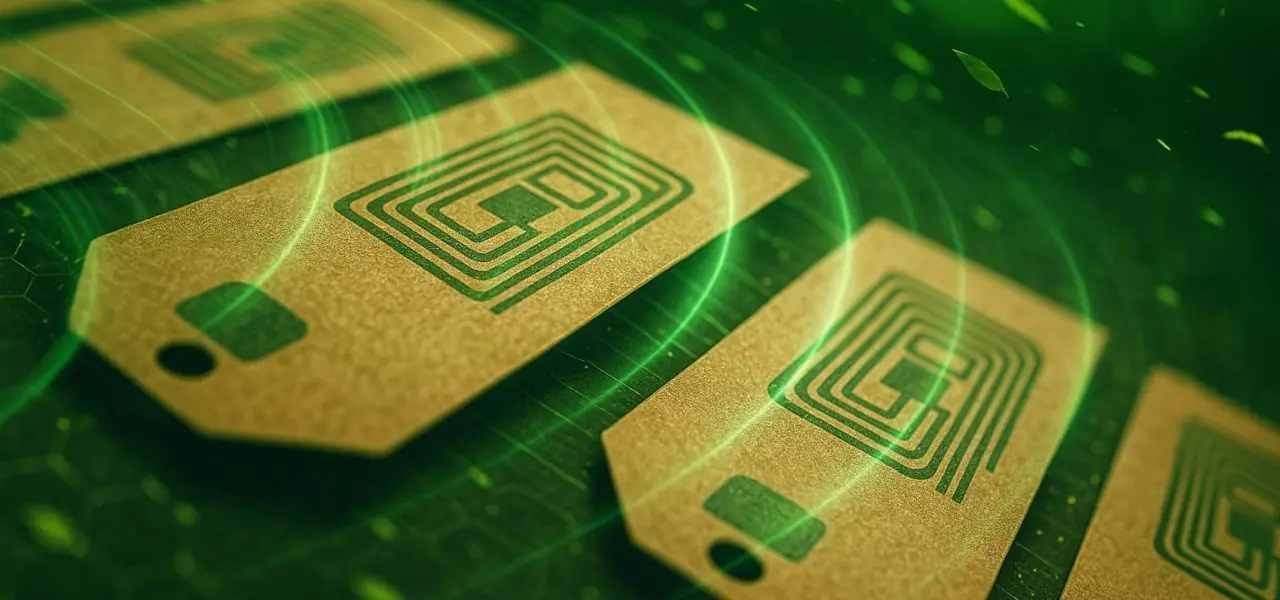In the connected world of the Internet of Things (IoT), wireless communication is indispensable – especially where long range is essential. Whether in logistics centers, agriculture, energy management, or industrial applications, technologies like LoRaWAN, UHF RFID, or 5G enable stable connections over long distances – sometimes several kilometers. Smartphones, wearables, and vehicles also communicate wirelessly via protocols like BLE, UWB, or Wi-Fi.
But that’s exactly where the challenge lies: The greater the transmission range of a radio signal, the larger the potential attack surface. Unlike wired networks or short-range communication such as NFC, wireless signals extend far beyond their intended area – and can be received by anyone with the right technical equipment. This makes wide-area wireless communication particularly vulnerable to security incidents – from simple eavesdropping to spoofing, replay attacks, and unauthorized control of IoT devices.
All the more reason companies must not trade control for coverage.
Security must be built in from the beginning, applied consistently, and regularly reviewed. Below, we present the most important technical, cryptographic, and organizational countermeasures to secure IoT radio communications reliably – even across long distances.
Key Measures at a Glance
1. End-to-End Encryption: The First Shield Against Eavesdropping
Every wireless transmission is fundamentally interceptable – even if the radio signal appears encrypted. That’s why end-to-end encryption (E2EE) is the foundation of secure IoT communication.
Instead of relying solely on transport protocols (e.g., LoRaWAN or MQTT), all data should be encrypted directly on the device – ideally already on the sensor or microcontroller. Modern algorithms like AES-256, ECC (Elliptic Curve Cryptography), or TLS 1.3 are commonly used. Especially in low-power IoT, efficiency is key – many chips now support hardware-based encryption with minimal power consumption.
2. Device Authentication: Trust Begins With Identity
Who is allowed to communicate with whom? This seemingly simple question is complex and critical in IoT practice. Without authentication, attackers can impersonate legitimate devices (spoofing) or manipulate ongoing communication.
Robust systems rely on mutual authentication between devices. This can involve:
X.509 certificates (as used with HTTPS),
digital signature validation at message level, or
challenge-response mechanisms using shared secrets.
UHF RFID tags, for example, can be equipped with special security chips (e.g., NXP UCODE DNA) that support AES-based authentication with authorized readers – making them unclonable and protected from external control.
3. Protection Against Replay Attacks: Time, Randomness, and Uniqueness
Attackers don’t always need to understand the content of communication. Often, it’s enough to record a valid radio signal and replay it later – for example, to unlock a device, trigger an action, or bypass security mechanisms.
The countermeasure: enforce non-replayability.
This can be achieved through:
Rolling keys: Keys that change with every transmission.
Nonces: Random, one-time values embedded in each message.
Time-based tokens: Messages valid only within a short time window.
Frame counters & Message Integrity Codes (MIC), as required in LoRaWAN.
BLE beacons, for instance, use rotating UUIDs (rolling IDs) to prevent persistent identification.
4. Context-Based Limitation: Communication Only Where and When It’s Needed
Geo-fencing and time-fencing are simple yet effective access control strategies. The idea: IoT devices may only communicate if they’re in the right place at the right time.
Examples:
A LoRa sensor is only allowed to transmit within a designated factory area – outside of it, the gateway blocks packets.
A UHF reader only accepts new commands when it’s connected to an authorized Wi-Fi network.
BLE tags in a hospital are active only between 8 a.m. and 6 p.m. – inactive outside of those hours.
5. Secure Firmware Updates: Protection Over the Entire Lifecycle
Many IoT devices are designed to last 5, 10, or more years. But without secure update capabilities, they remain vulnerable – especially in wireless systems where physical access is rare.
Secure OTA (Over-the-Air) updates are essential:
Updates must be digitally signed (e.g., with SHA-256 + RSA).
Devices must verify the integrity before installation – not after.
Update servers must communicate via authenticated and encrypted channels.
Updates should also be scheduled during controlled time windows to avoid disruptions in live environments.
6. Real-Time Monitoring & Anomaly Detection
Even the best-secured wireless networks can experience attacks or malfunctions. To detect such events early, monitoring and logging systems are essential – either locally (on gateways) or centrally in the cloud.
Successful approaches include:
Connection & activity logs
Threshold-based alerts (e.g., too many packets in a short time)
Machine learning models that learn normal behavior and detect deviations (anomaly detection)
These systems are vital not just for incident response, but also for auditing and compliance – especially in critical infrastructure (CI) contexts.
7. Security Architecture as a Design Principle
Ultimately, it’s not just about individual measures – but the interplay of all layers. Modern IoT security follows the principle of security by design.
This includes:
Network segmentation (e.g., separating machine communication from building infrastructure).
Zero-trust implementation: no implicit trust – every action must be authorized.
Least privilege: each device only gets the permissions it truly needs.
Using certified components: chips, modules, gateways – security starts with hardware.
Wireless IoT security will be a key focus at WIoT tomorrow 2025, taking place on October 22–23 in Wiesbaden, Germany. Discover practical solutions, expert insights, and live demonstrations addressing secure communication across LoRaWAN, BLE, 5G, RFID, and more.
Niklas Van Bocxlaer - Senior Event Manager, WIoT tomorrow
Security Measures in Detail: What Each Wireless Technology Specifically Requires
Wireless communication is not one-size-fits-all. Each IoT wireless technology comes with its own security risks – but also with its own protective mechanisms. While LoRaWAN relies on network keys and packet integrity, BLE beacons require a completely different focus: visibility, identity protection, and time-limited validity. NB-IoT, RFID, or 5G follow different paradigms when it comes to encryption, authentication, and update strategies.
Below, we outline the specific security measures required for each technology to avoid trading range and flexibility for security vulnerabilities – and how these protective mechanisms look in practice.
LoRaWAN
Use unique Application Session Keys (AppSKey) per end device to ensure data encryption and integrity.
Prefer LoRaWAN 1.1, which includes advanced security features such as Join Tokens and improved message integrity checks.
Enable frame counter checks on the network server to prevent replay attacks.
Authenticate each device via a secure join server with centralized key management.
For firmware updates via LoRaWAN, use multicast groups with encrypted OTA delivery and pre-synchronized time slots.
UHF RFID
Use only RFID tags with built-in AES-128 encryption and authentication mechanisms, such as the NXP UCODE DNA series.
Secure communication between reader and tag using a challenge-response procedure, where the reader requests a unique code.
Ensure readers only accept tags from approved product lines with valid serial numbers (backend verification).
Deactivate or destroy tags after sale (“kill command”) if privacy or traceability pose a risk.
Combine RFID infrastructure with physical geofencing – e.g., readers only authorized in protected areas.
Bluetooth Low Energy (BLE)
Enable LE Secure Connections with elliptic curve cryptography (ECDH) for secure device bonding.
Avoid the insecure “Just Works” pairing mode – use Passkey or Numeric Comparison instead.
For beacon applications, use only beacons with rotating IDs, such as Eddystone-EID or iBeacon Secure Mode.
Limit transmission power and range spatially and temporally – e.g., only during business hours at entrances.
Use Bluetooth Secure DFU (Device Firmware Update) for signed OTA updates of BLE devices.
Wi-Fi
Use WPA3-Enterprise with EAP-TLS authentication and digital client certificates to secure network access.
Enable isolation of IoT devices in the Wi-Fi network so they cannot communicate directly with each other.
Segment IoT devices into separate VLANs and SSIDs with limited firewall rules for maximum network separation.
Use rotating PSKs or centralized authentication via RADIUS for devices without certificate capability.
5G (including private 5G / campus networks)
Authenticate devices via USIM/eSIM using the 5G-AKA procedure and use Subscription Concealed Identifiers (SUCI) to prevent IMSI leaks.
Use TLS 1.3 or QUIC for end-to-end encryption at the application level, even in private 5G networks.
In campus networks, apply network slicing and QoS profiling to isolate and secure critical IoT communication.
Enable Security Edge Protection Proxy (SEPP) for data transitions between networks (e.g., roaming or site-to-site communication).
Link IoT devices to application-specific token mechanisms (e.g., OAuth 2.0 or signed JWTs) for fine-grained identity and access control.
Security is Not Optional – It’s Essential
Wireless range is a technological advantage – but without security, it becomes a vulnerability. Those relying on wide-area IoT communication must go beyond simply implementing standard protocols. Protection begins at the device level, continues through the network, data transmission, backend, and extends to operational management.
Only with a consistent, multi-layered security approach can range and risk be brought into balance.
Anja Van Bocxlaer - Managing Director









